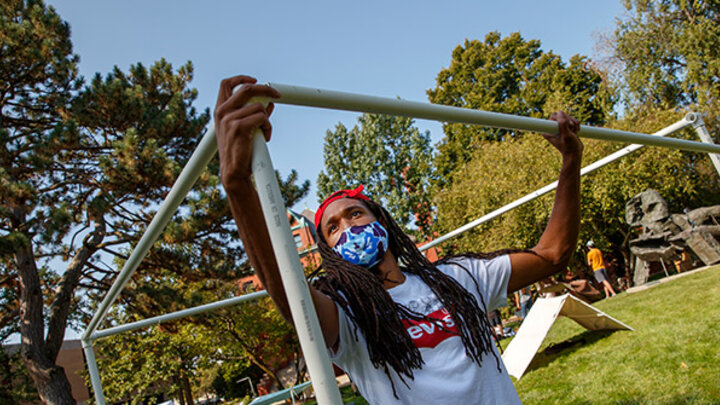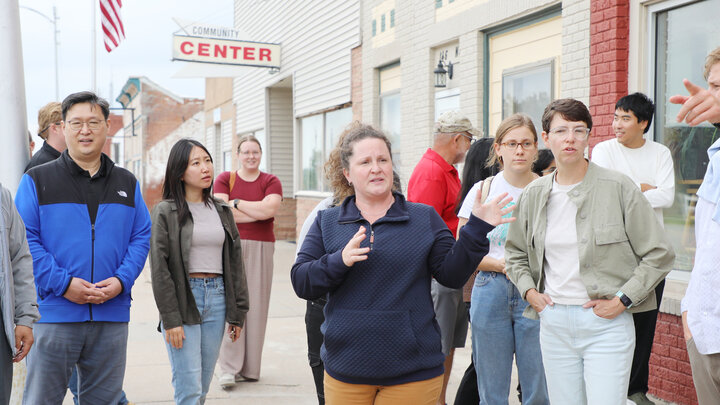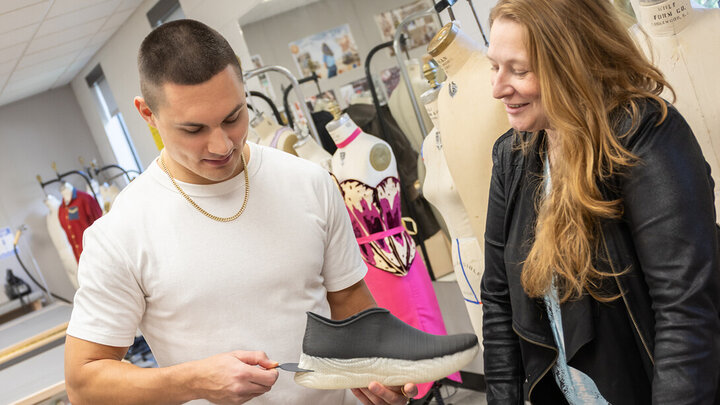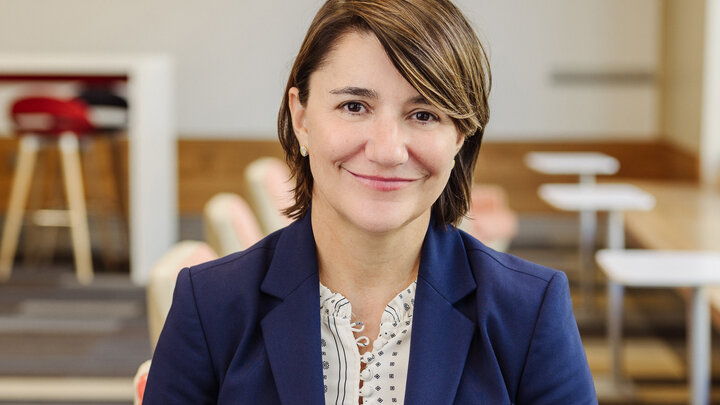The official name of Sharon Kuska’s Architecture 231 course? Structural Fundamentals.
“But we call it ‘Structural Fun,’” she said.
The professor and associate dean of architecture is ensuring that the course remains true to that informal name even amid the pandemic. And she’s doing it, surprisingly enough, by building certain facets of the pandemic into the course.
Twice this week and next, the four respective sections of Kuska’s class — about 120 students in all — are descending on the green space near Architecture Hall to construct transportable sunscreens.
Just a few conditions: incorporate the physical manifestation of a feeling all too common during the pandemic — tension — while accommodating 6 feet of social distance. Oh, and try to do it with whatever happens to be lying around the dorm or apartment or sorority.
“Some of the students were quarantined earlier; some are just getting quarantined now,” Kuska said. “So what would they have as far as materials that are at home or handy?”
Bedsheets, tarps, grocery bags — whatever sustainable, recyclable or reusable materials can offer some shade under tensile stress are making appearances on the green, Kuska said. The structures emerging from those materials, she said, are almost as varied as the students.
Some are choosing to wear their creations. One student drilled holes through the ends of yardsticks and affixed them to the top of a baseball helmet with a bolt before splaying fabric over the top, taking care of the sun and social distancing at the same time. Others are fabricating ground-bound structures that more closely resemble tents, stretching the sunscreens across frames made from hangers, PVC piping, broomsticks or, in a few cases, tree trunks.
Before building, the students take time to plan and sketch their designs. Afterward, they briefly present the results to their classmates and to Kuska, explaining the whats and whys and hows.
It’s all part of an effort to marry the design sensibilities Kuska absorbed while earning her bachelor’s from the College of Architecture with the more technical principles she learned while getting her master’s and doctorate from the College of Engineering.
“It’s meant to develop an intuitive sense of how structures will react and behave when loaded with forces — understanding the elements of a structural system and what their strengths are, what their weaknesses are,” she said of the course. “It’s an appreciation for engineering without the numbers, looking at structures without plugging in values and formulas but still understanding how they will act.
“I always say: You can have structure without architecture, but you can’t have architecture without structure. So it’s very important for the architecture and interior design students that are in the class to have this sensibility toward the structural elements.”
In past years, Kuska has often cultivated that intuition with food — specifically by having her students build bridges and other structures from it, especially pasta. She said this year’s unique circumstances have pushed her to get creative with her own creativity.
“This year, the students said, ‘Well, do you have any examples from past years?’ And I said, ‘Well, no, we haven’t ever had to do social distancing before, so you’ve got to come up with this,” she said, laughing. “It’s creativity, and it’s a little bit of design thrown in with the theoretical understanding. But they have fun with it. They really do.”




